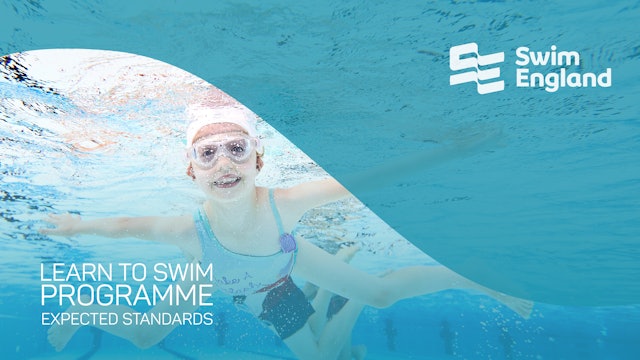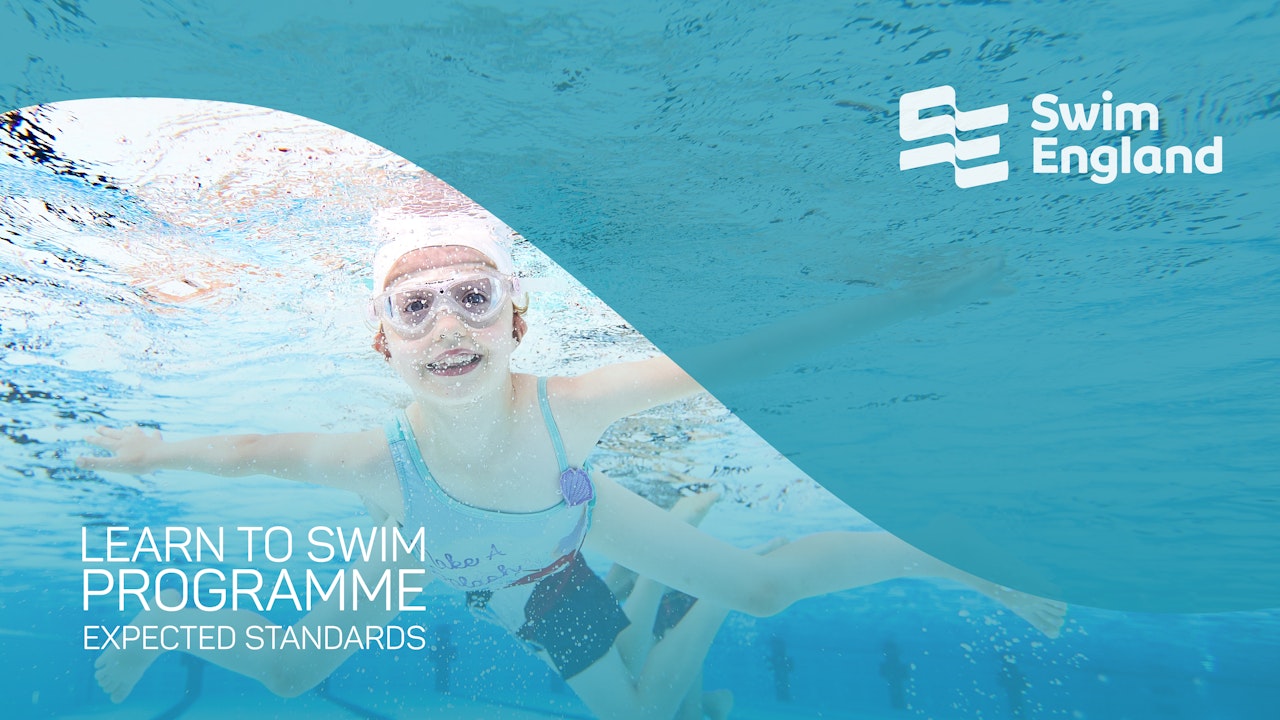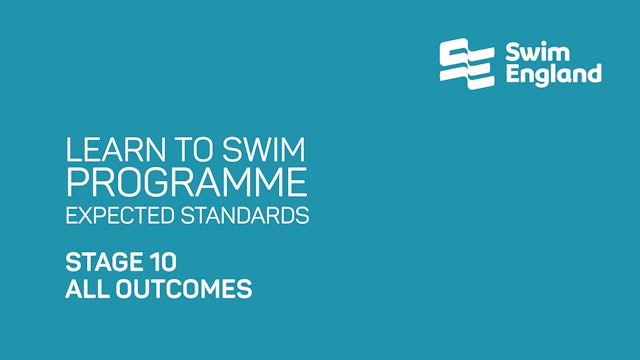Expected Standards Learn to Swim Framework
10 Seasons
The Swim England Expected Standards are referenced throughout the Learn to Swim Programme. They accompany our Awards to support teachers and coaches to maintain the highest standards when teaching children.
Each digital video shows you an individual outcome in the Swim England Learn to Swim Framework, Stages 1 to 7, and each outcome for the Swim England Aquatic Skills Framework, Stages 8 to 10 Swimming.
-
Stage 10 All Outcomes
-
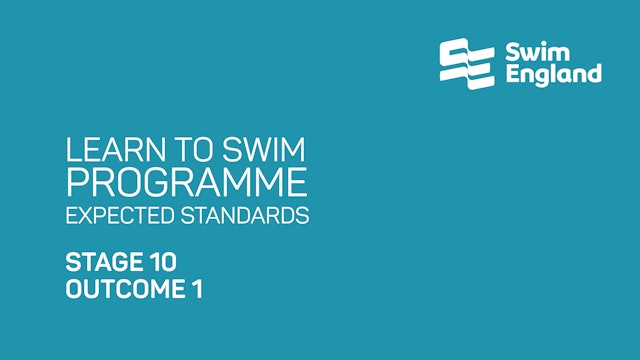 00:44Episode 1
00:44Episode 1Stage 10 Outcome 1
Episode 1
Complete a set lasting 1,600 metres (either 16 x 100 metres, 8 x 200 metres, 4 x 400 metres) on a specific turnaround time agreed by the teacher/coach (e.g. 2.30 min for 100 metres); focus on
stroke technique and consistency.Complete the set whilst utilising the clock correctly and obeying the ...
-
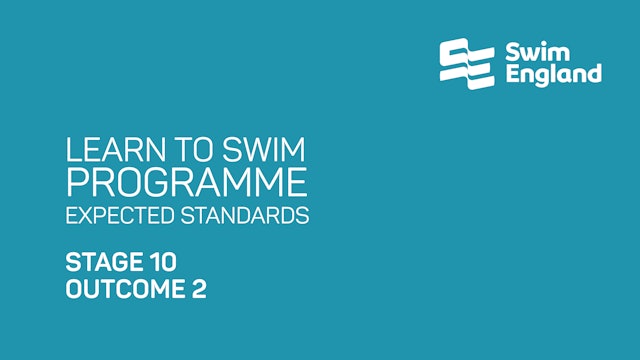 00:43Episode 2
00:43Episode 2Stage 10 Outcome 2
Episode 2
a. Use correct start, turns and finish without stopping over the set distance.
b. Maintain stroke technique throughout the specified distance.
c. Demonstrate a consistently efficient stroke throughout the specified
distance. -
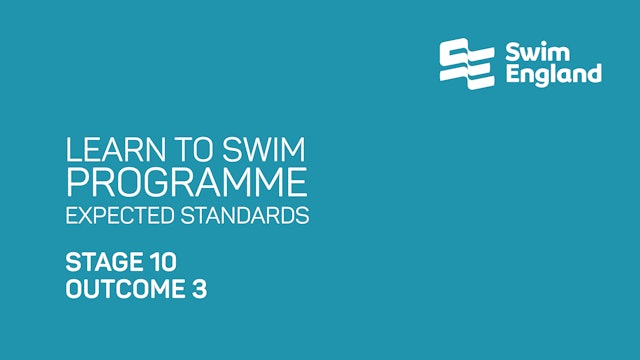 02:21Episode 3
02:21Episode 3Stage 10 Outcome 3
Episode 3
a. The butterfly element can be done on the front, side or back.
b. If on the front the arms will be streamlined in front and the head will come up at the front or to the side to breathe.
c. If on the side, one arm will be close to the hips (not aiding propulsion) and one arm will be in front o...
-
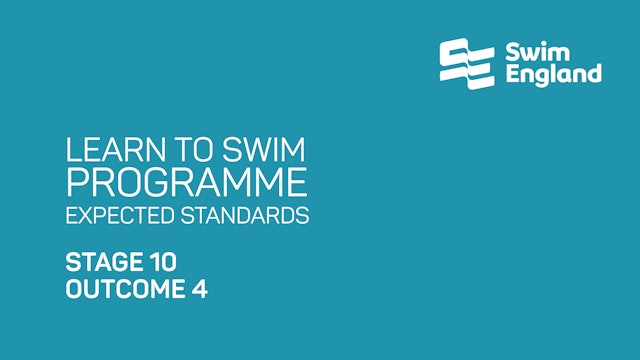 02:59Episode 4
02:59Episode 4Stage 10 Outcome 4
Episode 4
a. Use correct start, turns and finish without stopping over the 200 metres.
b. Maintain consistent strokes throughout the specified distance.
-
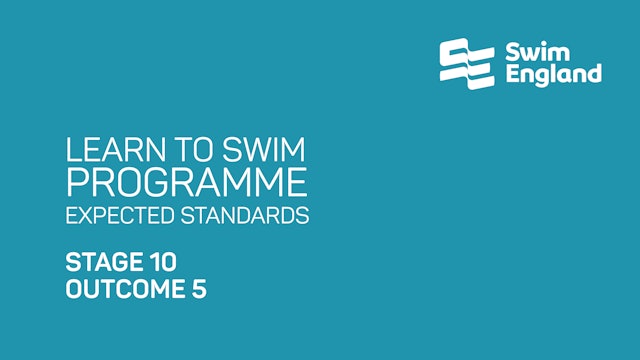 00:33Episode 5
00:33Episode 5Stage 10 Outcome 5
Episode 5
a. Maintain speed into the wall.
b. The swimmer will finish on a full stroke without a glide.
c. The swimmer will stretch into the finish by turning onto their side.
-
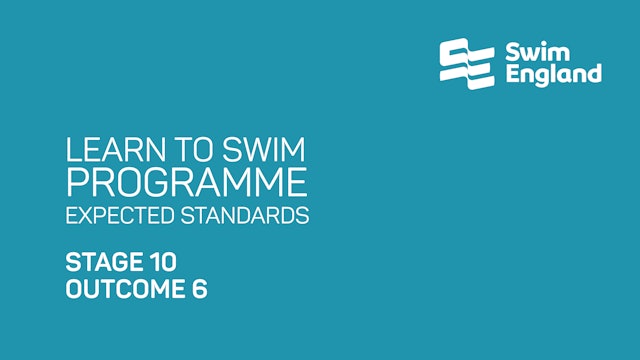 01:02Episode 6
01:02Episode 6Stage 10 Outcome 6
Episode 6
a. The outgoing swimmer will watch the incoming swimmer and initiate the
start before the incoming swimmer has actually touched (usually as the
incoming swimmer starts the recovery of the stroke that is going to touch
the wall).b. The swimmer will leave the side when the incoming swimmer touche...

